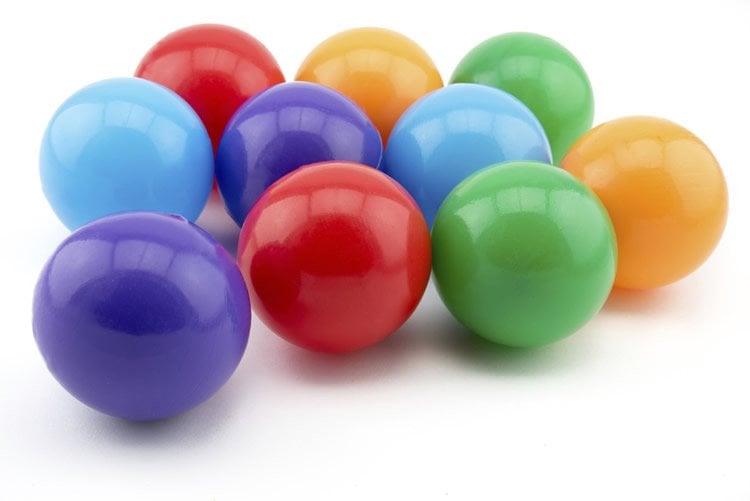A theory that links memory encoding to expectations of future relevance may better explain how human memory works, according to a team of Penn State psychologists.
Modern psychology posits two major theories to explain the mechanisms of how memories are formed. The first is object-based encoding, storing all information about an object in working memory. The second is feature-based encoding, selectively remembering aspects of an object. For example, if you watch a group of people playing basketball, under object-based encoding theory, the brain remembers all aspects of the ball. In feature-based encoding, the brain remembers that it saw a ball, but may have no recollection of the color if the color of the ball is an unnecessary feature according to the task at hand.
The proposed theory, expectancy-based binding, suggests that subjects can remember features presented in a visual scene or movie without necessarily remembering which object went with which feature when it is not necessary to do so.
“The key discovery was that attending an object for an extended period of time does not ensure that all of the features of that object will be correctly associated with it in memory,” said Brad Wyble, assistant professor of psychology.
The researchers tested 60 participants and asked them to watch videos in which two balls were thrown between multiple people. The first ball thrown was the target ball. Participants counted the number of times the ball was passed. The second ball was the distractor ball. Each participant watched 36 trials, recording their counts of the target ball after each. The balls in each video were red, green, blue or purple. The researchers reported their results in a recent issue of Cognition.
For the first 31 trials, participants chose only the number of passes made with the target ball. After the thirty-second trial, a message popped up on the participant’s screen that read, “This is a surprise memory test! Here we test the ‘Color’ of the target ball. Press a corresponding number to indicate the ‘Color’ of the target ball.”
To this question, 37 percent of participants — 22 of 60 — responded with the incorrect color of the ball, and 16 of these 22 incorrect responses selected the color of the distractor ball.
“Participants have memories of the color of both balls, but those memories aren’t attached specifically to the target ball or the distractor ball,” said Hui Chen, post-doctoral fellow in psychology and first author.
It is statistically significant that 73 percent of participants responded with the color of the distractor ball. If participants had no memory of the color of the balls seen in the video, as feature-based encoding might suggest, then participants would have chosen the distractor ball only 33 percent of the time when they could not remember the target ball’s color.
Four control trials, in which participants reported the color of the target ball and number of times the target ball was passed, followed the trial containing the surprise question. For these trials, the response error was once again lower. Only 14 percent of participants responded incorrectly in the control trials, as compared to 37 percent in the surprise trial.

“What we’re showing is that attention is not enough to ensure accurate memory,” said Wyble. “You need some kind of expectation that attributing certain features to the object is important.”
This indicates that much of what a person can remember is based on their expectation of the information they will need to recall. Once participants realized they would need to report the color of the ball, they were able to do so with high accuracy.
To ensure the results were robust, the entire experiment was repeated a second time with a new group of participants. The new experiment replicated the results of the previous experiment, which provides additional confidence that these surprising memory failures are a genuine effect.
Also working on this project was Garrett Swan, graduate student in psychology.
Funding: The National Science Foundation supported this wor
Source: A’ndrea Elyse Messer – Penn State
Image Source: The image is adapted from the Penn State press release.
Original Research: Abstract for “Prolonged focal attention without binding: Tracking a ball for half a minute without remembering its color” by Hui Chen, Garrett Swan, and Brad Wyble in Cognition. Published online February 2016 doi:10.1016/j.cognition.2015.11.014
Abstract
Prolonged focal attention without binding: Tracking a ball for half a minute without remembering its color
Conventional theories of cognition focus on attention as the primary determinant of working memory contents. However, here we show that about one third of observers could not report the color of a ball that they had just been specifically attending for 5–59 s. This counterintuitive result was obtained when observers repeatedly counted the passes of one of two different colored balls among actors in a video and were then unexpectedly asked to report the color of the ball that they had just tracked. Control trials demonstrated that observers’ color report performance increased dramatically once they had an expectation to do so. Critically, most of the incorrect color responses were the distractor ball color, which suggested memory storage without binding. Therefore, these results, together with other recent findings argued against two opposing theories: object-based encoding and feature-based encoding. Instead, we propose a new hypothesis by suggesting that the failure to report color is because participants might only activate the color representation in long-term memory without binding it to object representation in working memory.
“Prolonged focal attention without binding: Tracking a ball for half a minute without remembering its color” by Hui Chen, Garrett Swan, and Brad Wyble in Cognition. Published online February 2016 doi:10.1016/j.cognition.2015.11.014







